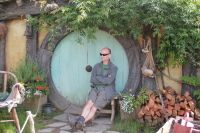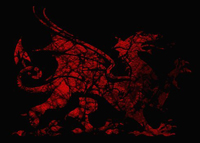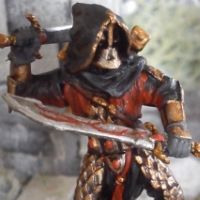A belated thanks for everyone for kind comments!
It’s been a while since my last update – sorry for that. But after a refreshing summer break, it’s time to get crackin’ again in building terrain and painting miniatures! The Campaign will continue soon with the Bridge of Khazad-dûm scenario; the Moria terrain is already finished but I need to do some tests on how to light up the terrain and the balrog for the batrep photos. I also want to take a couple of “intermission” photos between Moria and Amon Hen – meaning that I need a bunch of Lothlorien trees. I will also do a little vignette with the Argonath statues & boats (with extra details on boats) & surviving Fellowship members. I never got the photo-etched ferns I ordered on time for the model show in March, so I will be adding some soon to the Amon Hen terrain. Photos of these mini-projects will be added in due time. Meanwhile, I’ve been quietly casting plaster blocks with Hirst Arts molds, a couple of times per week. I plan to keep this up for the foreseeable future in order to have a huge stockpile of blocks when I start building the ruins of Osgiliath sometimes in 2016. I usually always cast the full basic block mold #40 (and all the basic blocks in any other mold), the ruined tower mold #65, the wall mold #200, bits of the 4” circular tower #52 (stairs & walls), stairs & arches from prison tower mold #60, large arch from the bridge mold #53, arches from the dungeon molds #41, #44 and #45, and occasionally also the octagon tower mold #63, turret mold #61, worn floor tiles #206, slate roofs #245, and small bricks #250.


But most of the current efforts have been directed towards the largest ongoing project, Helm’s Deep, and particularly to the tower and the ramp. You might remember that the tower is based on a 10cm diameter cardboard tube, tapered towards the top. I continued by cutting it in three parts – if it were attached to the Hornburg in one section, I probably couldn’t move the terrain piece through doors. The lowest section reaches up to the Great Hall floor level, and the topmost 30 cm or so forms the top bit. A cardboard “lip” was glued to the bottom ends of the two upper parts to ensure that the tower stays together when assembled for display or for gameplay.

The tower cross-section is a six-pointed star; the parts for the points were cut from 6mm Depron, beveled as appropriate. At this point, I did not glue the points together just yet – merely assembled them with masking tape.


Holes were cut to the topmost part for the arched windows.

A lip was glued inside the top part to hold the floor.

Test-fitting the floor (6mm Depron) and the inner & outer surface (3mm Depron).


Test-fitting the tower next to the Hornburg; the points are again only taped on. In the final image you can also see the black marks where the window holes will appear. The tower stands about 112 cm above the ground level – quite massive, but it should be a close match to the size of the tower in the movie Helm’s Deep.



Finally, here’s a pic of a prototype horn, made from cardboard, masking tape and styrene tube. In order to make six reasonably similar horns, I have, since making the prototype, sourced suitable bits to be used – think plastic nozzles and plastic champagne glasses!

The next stage is to actually glue everything together – I wasn’t initially sure whether to scribe the tiling to the parts before assembly or after, but now I’m leaning to after to ensure that the layers of blocks are level from one point to another. I will also add details to the top floor, including the staircase top seen through the floor, and, of course, the mouthpiece of the horn.
 Top
Top Top
Top Top
Top Top
Top Top
Top Top
Top Top
Top Top
Top Top
Top Top
Top Top
Top Top
Top Top
Top Top
Top Top
Top Top
Top Top
Top Top
Top Top
Top Top
Top







































